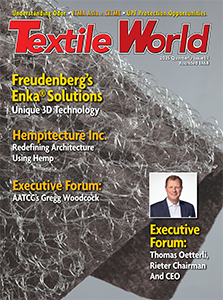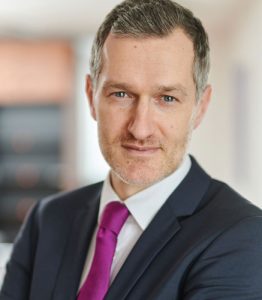
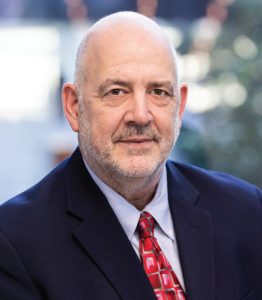
Textile World recently spoke to INDA’s Tony Fragnito and EDANA’s Murat Dogru about the Global Nonwoven Alliance (GNA).
TW Special Report
Last year, Cary, N.C.-based INDA, the Association of the Nonwoven Fabrics Industry, announced a collaboration with Brussels-based EDANA, the Voice of Nonwovens. The two organizations signed a letter of intent committing to explore a strategic alliance to leverage their combined resources and expertise.
As discussions progressed, INDA and EDANA recognized the need for a new group, the Global Nonwoven Alliance (GNA), which is intended “to provide international leadership for the representation and responsible advancement of the global nonwovens industry while respecting and benefiting its members.” INDA and EDANA, the founding members of GNA, will continue to operate as independent legal entities while also aligning resources and expanding collaboration to offer a coordinated strategy toward the opportunities and issues faced by the global nonwovens industry. The hope is that GNA will enhance programs, service, reach and efficiency.
As INDA and EDANA continue their discussions to hash out organizational details and develop a timeframe for GNA, TW had the opportunity to chat with INDA President and CEO Tony Fragnito and EDANA General Manager Murat Dogru.
TW: For those unfamiliar with INDA and EDANA, can you please provide a little background about the organizations.
Fragnito: INDA was formed in 1968 primarily to support roll goods manufacturers and a more limited group in the supply chain. Since that time, we’ve evolved and as nonwovens have become more common and are found in everyday products as well as more durable products, our scope and focus has expanded to include those segments of the market. We cover the supply chain now and are evolving to cover more of the innovation in the industry.
Obviously, I think it’s an important aspect of an association to recognize the contributors to the industry and we have various awards programs tied to the individuals as well as innovative products.
We also deal with evolving issues that the industry is grappling with whether that be regulatory issues, innovations and materials science, or trade issues. In addition, we are trying to look ahead and anticipate the issues that the industry will be involved with.
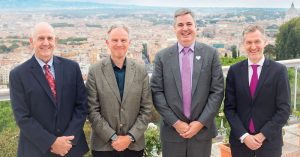
Dogru: It’s more or less the same thing for EDANA. We have existed for a little bit more than 50 years. Today we represent more than 260 members. All of our different activities are defined by three main pillars — create environment beneficial for innovation and growth, foster product stewardship, and advocate for free and fair trade. We are an international association like INDA.
We have members from all across the world, but our main focus remains in extended Europe. But we also have members based in Asia, the United States, and many members that are international companies.
Our field of expertise is really focused around eight fields — public affairs, regulatory affairs, activities around sustainability, business intelligence, trade, scientific affairs, also being a long learning partner for experts in the industry so learning and development, and everything that touches marketing and communication I would say.
EDANA represents the entire nonwoven supply chain from the raw material suppliers to the converters. When we say something and when we advocate for the industry, we have the full power behind us, the full positioning of the industry to be able to make a statement. It’s not easy, but that makes the strength of an association like EDANA or INDA because it’s the same methodology.
TW: How does INDA differ from EDANA, and how do the two organizations complement one another?
Dogru: Many, many common services is what Tony and I have been able to notice since we started talking. We have been really open about what we are, the challenges or services and we have been able to compare and quickly see that many things are mirroring themselves in Europe and in the United States. Events, training, technical affairs and market data for the industry for example. And if we are talking about say a trade show — we have IDEA and INDEX — we are learning from all the experiences that the participants and exhibitors have. At the end, our purpose and objective is to give them the best experience ever at each IDEA and each INDEX show.
But at the same time, there is also some uniqueness in Europe and the United States. The level of scrutiny that we have in the U.S. or in Europe is some-times different. I’m thinking of advocacy, for example. And there is a uniqueness to each region. There are also some global challenges that we are working on hand in hand.
Fragnito: I think that’s true. The parallels of the topics that are important for our members are very much aligned. I would say the external pressures are a bit different. Europe is more active and advanced in their regulatory pressures around environmental issues where the United States is not quite as aggressive there.
There is a difference in services in one area, INDA does have two magazines that we publish — a fiber journal and a filtration journal — and Murat and I both see those as a strategic advantage to leverage on a global scale, so while it may be slightly different, it’s something that we both see as an opportunity to collaborate on and help grow, and maybe expand into other areas.
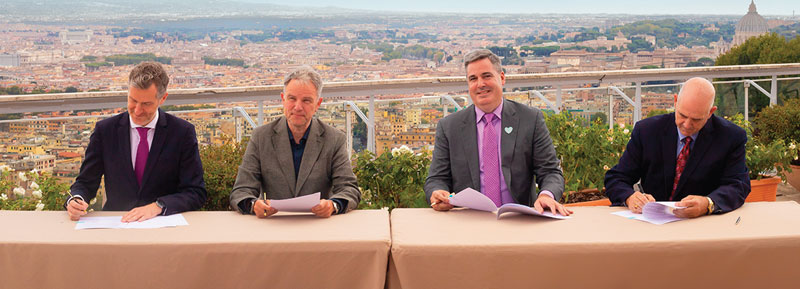
TW: How will you counteract a perceived “diluted effect” of smaller members?
Fragnito: Many of our members are regional and operate only within the U.S. or in Europe let’s say, but a large percentage have operations in multiple parts of the world. When we’re at the table as a trade association, everyone really has an equal voice, so our large, multinational members sit shoulder to shoulder with smaller, regional players. The perception a lot of time is that the big players really call all the shots, but the reality is it’s really equal at the table. If a company is interested in the issue, they are able to understand that things that are not happening in their back yard have the potential to influence how their business operates and they understand these are valuable perspectives to understand. When it comes to regional members, there was some concern voiced about will we lose? will we dilute? and I think the reality is those members will actually see added value from this new formation. I think they will really have the opportunity to get their finger on these trends that could be impacting them a few years down the road.
TW: As an INDA member or an EDANA member, how will this change my longstanding relationship with my organization?
Fragnito: We actually think our members will see a higher value from engaging in both organizations. Obviously, we can say that, but we have to prove it. I’m sure that we will. Our members have been I think very supportive of the idea. There is an ancient proverb “success has many fathers.” We’ve heard a lot of members saying “I said this should have happened years ago.”
Dogru: We can for example mention that there will be more extensive collaboration opportunities on global research projects, alignment on sustainability and circular economy initiatives, greater visibility for research through global communication and events. Will it be beneficial for everyone? Potentially not. But at least I would say there is a set of 30 to 40 things of added value that we can extract from this collaboration. And the aim is to make sure that each member will be able to see what is the most important for them and to take the specific value there. We are still independent as associations so internally, there is INDA and EDANA and members of the organizations, and the power is in the hands of the board of each organization.
TW: How is the alliance organized?
Dogru: We do foresee this as a federation so where the initial members would be for sure INDA and EDANA. But it’s the creation of an organization where we are the initial members and this federation will not just be limited to INDA and EDANA, but be open to other trade associations across the globe. Again, there is added value of the more we are, the better it is.
Fragnito: The way that we see the organization being governed is that INDA will appoint six members to serve on the GNA board and EDANA will appoint six members as well. The focus of this GNA board will be to look at establishing the principles for the industry that then INDA and EDANA will use to help guide how we respond to issues on the ground so that we have more consistency.
I think both of our organizations believe that any global organization needs to be able to have fair and equal trading. It’s a global industry and people should be able to move products and services with minimal barriers. So it’s easy to make a statement like that, but when you start actually applying that to a situation on the ground or a particular perspective of a country, it gets a little bit more challenging. Establishing those high-level principals that we can then refer to as we deal with the issues on the ground, is helpful. Establishing different rules in different regions is not beneficial for any of the industry. It’s a lot easier to do that in the framework of GNA, and we’ve identified projects already that logically make sense to be under the GNA umbrella.
Dogru: To make it as simple as possible, the power is remaining in the hands of the members. The members are still electing people on the board of INDA and EDANA. Those elected people are of course setting the strategy of each association. In order to also be part of GNA, within that group they will be electing a certain number of people. So those people will have like an extended mandate in order to be able to discuss the topics that will be brought at the GNA level. There will be subjects that will remain at the INDA and EDANA level. As we have said, there are specific regional issues and there are topics and services that will be discussed at the GNA level.
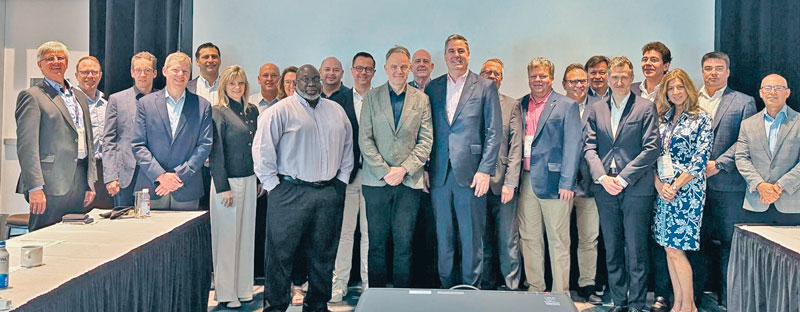
TW: What are the goals of the alliance, and where do you think GNA will have the biggest impact?
Dogru: One thing I would like to say is we see GNA as something where the sky is the limit. It’s an open door for any other association to join us.You know, nonwovens is many different product applications. What we have seen is sometimes there are some other associations that exist that can bring a certain category of needs for some of our members. Maybe GNA can be this big federation and we can welcome with open arms all these other associations so that collaborate and convene. This is a dream when we look at the long-term vision. I really think we have just put in place the first steps of what could be achieved. It has to be done correctly so that we are strong together.
TW: What is the timeline for aligning the organizations and launching GNA?
Dogru: Sooner is the best for sure. We are already well advancing and everything is happening. We want to be fair with you, as we have some timelines in mind, and I’d prefer not to make an official statement at this point. At the same time, the only thing that is important for us is that we do proper due diligence exercises and make sure that everything has been covered.
Fragnito: I think Murat alluded to this earlier, but we exist for our members and it’s been very important for us to keep our members moving with us. We don’t want to put any artificial timelines on this. We really want the members to feel comfortable with why we are doing this and how we are doing it and the implications of what we are doing. The more important thing is to have them fully on board and have them under-standing the realities.
TW: Should there be reason to disengage from the alliance, is there a process in place?
Fragnito: I think we have to accommodate all possibilities. We’ve had some conversations about six and six, for example — how do you break a tie? We will have to deal with those sorts of issues, but I think the reality of those being challenges for us are small. I think the odds of those sorts of things happening are small. I think if we have issues that our GNA board is really split on, I don’t think it will be a regional split with the U.S. voting this way and Europe voting the other way down some regional line. I think it would be for completely different reasons with a disagreement or concern about a particular approach.
We’ve accommodated things like ties, and what if one association is not finding the value in this, is there a way to disengage from the federation, and we’ve accommodated those things, but we do think the likelihood is minimal that those things will occur.
Dogru: Yes, all of those options have been discussed and put in place. I think while we have been considering all of the options, we have also considered what is the worst-case scenario if this thing doesn’t work. I don’t believe this is what will happen, but we still need to be able to discuss it. And INDA and EDANA will be remaining, so if we have a challenge and a collapse — although for what reason I do not know, although who knows … maybe it will happen! — but INDA and EDANA will continue to exist and will still bring the value that they do today and even more in the future.
TW: Any message would you like to share with the stakeholders in the global nonwovens industry about this alliance?
Dogru: I do think that the joining and strengthening of forces can only be helpful and supportive for the industry. By joining forces, we are strengthening the strength. It’s not just the supply chain, and it’s not just EDANA. It’s EDANA and INDA and whatever other association is going to join us later on. But with this opportunity, we are enlarging the potential group of this discussion, this group of collaboration, this group of what can happen. I do have the feeling that we are doing something rather unique here between the two associations and I am really excited by it.
Fragnito: The thing that I come back to is that it’s one thing to pay your dues and support the organization. But to really get the value out of the organization you need to be involved.The biggest thing for our members, big or small, is to commit individuals and give them the time to engage in the activities of INDA, EDANA and GNA because that’s how they really influence the issues that we are grappling with and how we accomplish what we do with the limited staff. The issues that we take on for the industry are the ones that people bring to us. That’s how we really guide our resource allocation — by those members that are active and engaged. My message to members all the time is don’t write your check and wait for things to come to you.You really need to engage, you need to visible and you need to be seen in the organization to influence our agenda.
2025 Quarterly Issue II

